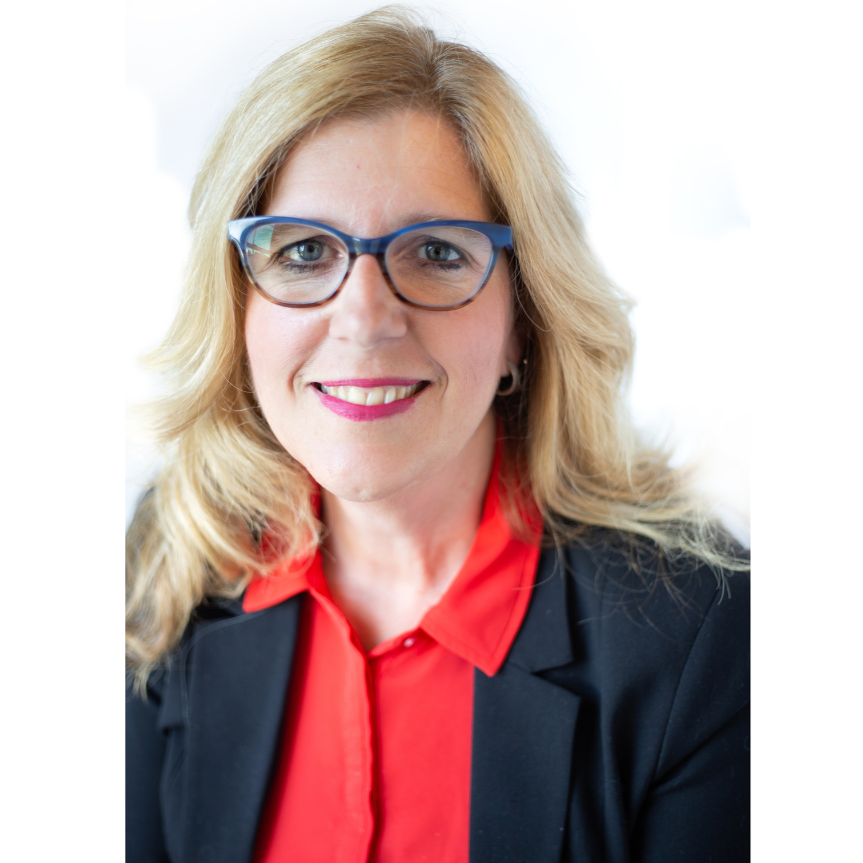Estimated reading time: 8 minutes
MHCC & Series – Muscular Dystrophy Canada
by Allison Cowan
Welcome to the second installment in the MHCC & series, designed to get to know our HealthPartners membership, and discuss where our realities intersect, and how best to support each other.
September is Muscular Dystrophy Awareness Month, so MHCC’s Vice President, External Affairs and Development, Allison Cowan, sat down with Stacey Lintern, CEO of Muscular Dystrophy Canada, to learn about the outsized strength and resiliency of a community too often overlooked and underestimated.
When I met with Stacey Lintern, CEO of Muscular Dystrophy Canada, she incisively captured the challenge faced by the neuromuscular disorder (NMD) community.
“We live in a ‘move it or lose it’ world,” Stacey explained. “This hustle culture doesn’t just threaten to leave people with NMDs behind – it can actually be deleterious.”
She gave the example of Duchenne muscular dystrophy, but she could well have chosen any number of the more than 160 disorders that fall under Muscular Dystrophy Canada’s mandate.
“Imagine a little boy [Duchenne affects people assigned male at birth] who is struggling to keep up in class, who seems tired, who can’t get his outdoor clothes on quickly enough…and he’s told to hurry up, to stop dawdling, to focus…and in reality, not only is he physically incapable of meeting these expectations, he’s doing damage to his muscles by virtue of trying.”
“With Duchenne,” Stacey went on, “which usually isn’t diagnosed till the illness has progressed, at say three or four years old, the child won’t produce any more dystrophin [which is required for maintaining muscle strength]. In short, they can’t regain what’s been lost, and the loss will have occurred more quickly due to the effort expended by the futile attempt to keep up.”
Unfortunately, in the case of Duchenne, and many other NMDs, those losses will continue to mount, shortening life expectancy and oftentimes requiring 24-hour care.
Untangling a complicated diagnosis
Given that neuromuscular disorders exhibit a grab-bag of symptoms, varied age of onset, and a spectrum of severity, their complex nature challenges our overstretched health-care system, and stymies the physicians charged with untangling the Gordian knot of diagnosis.
Muscular Dystrophy Canada interacts with upwards of 27,000 people as registered in their data base, about 16,000 of whom are caregivers. Keeping tabs on individual experience by following personal journeys informs the growing body of evidence the organization uses to influence policy changes.
“We are driven by evidence, which we work hard to translate into airtight advice for policy makers…these disorders require an outsized investment because their severity often means they put a disproportionate strain on services: from the health-care system to community and social supports, the list goes on.”
These “individually rare, but collectively common,” disorders – as Stacey eloquently describes them – produce a perfect storm of misdiagnosis and misunderstanding. Together, this reality creates a pervasive stigma, adding to the burden borne by people who’ve already been dealt some of life’s toughest cards.
The impact of uncertainty
“It can take up to 17 years to get a diagnosis in some cases,” explained Stacey. “It might start with muscle weakness in the hands, or a drop foot, and a lack of awareness even within the medical profession means people aren’t referred to neurologists, but rather physiotherapists, and, in some cases, psychiatrists.”
Contending with this uncertainty presents its own struggle, as people deal with their physical symptoms, while wrestling with the mental health challenges that accompany being dismissed or disbelieved.
“Add to this,” said Stacey, “the daily frustration of losing control of your own bodily autonomy, and you have a group of people who have to find the extraordinary inner strength to navigate a world that not only doesn’t accommodate their needs – but disregards them.”
Part of Muscular Dystrophy Canada’s mission is helping the community gain back some of the control they’ve lost.
“A point of pride for us is not just patient engagement, but patient leadership. Our job is to give them the platform, because these are some of the strongest, most resilient, most adaptive people I’ve ever met. And it’s not trite to say that they have so much to teach the rest of us.”
Taking back control
Stacey described the daily frustrations that someone living with a neuromuscular disorder could face, from waiting for an-in home attendant who might arrive at a different time every day; to struggling with mundane daily tasks, like doing up buttons; to the indignity of being unable to access basic health care due to physical limitations, like inability to transfer from a wheelchair to an examination table.
Compound this with a dearth of specialists, societal stigma, and the mental health burden of being faced with a progressive disease, and you have a community who would be justified in feeling excluded.

Yet, with the guidance of their membership, Muscular Dystrophy Canada is rewriting that narrative.
This includes a steep investment in a hotline that helps individuals and caregivers access accurate, timely, and relevant information about the latest research, treatments and clinical trials. And a patient education program that equips people with lived experience with the knowledge and skills to peer-review potential research studies and evaluate outcomes.
Muscular Dystrophy Canada doesn’t just pay lip-service to a person-first approach. They put their money where their mouth is.
Leading from behind
“We work in partnership with clinical peer-reviewers, so we extend the same opportunity to patient reviewers. It’s a signal that they are as valued and important to the process as the clinicians sitting next to them,” said Stacey. “We believe in the ‘nothing about me without me’ ethos, and it’s a commitment we share with our international peers. We challenge each other to think harder and smarter about how to bring people with lived experience into every aspect of our decision-making.”
In responding to a need identified by the NMD community, the organization is also providing accredited ‘Master Classes’ to doctors, nurses and allied health professionals, to generate a broader understanding of the disorders, and, ultimately, create a pathway to speedier diagnosis.
“Time is of the essence,” said Stacey, referring specifically to the urgent need to expand newborn screening panels to include Spinal Muscular Atrophy. “It was the most fatal genetic disorder for children under two…but we have worked to change that.”
The organization had a plan to advocate for widespread screening, which would need to be adopted province-by-province and territory-by-territory. By dint of hard work – and hard evidence – they advanced their eight-year timeline by a full five years.
By September 2024, every province and territory will be participating. Thanks to Muscular Dystrophy Canada’s relentless commitment, infants can now receive life-changing treatment before symptoms even develop – no matter where in the country they were born.
While Muscular Dystrophy Canada counts this as a triumph, it’s also a reminder of how much work the organization has yet to do. Stacey wants these panels expanded to include more NMDs, but her ambition doesn’t stop there.
“All people are not treated equally – or equitably – in our community,” Stacey said. “It’s already difficult enough to access to innovative therapies in Canada, but for some members of our community, a baseline for participation in a clinical trial is a six-minute walk test. If you can’t meet that threshold, you’re dismissed out-of-hand.”
Lowering barriers
A former clinician herself, Stacey worked in community nursing to help integrate people with disabilities, and she’s hurt and indignant on behalf of those whose opportunities and contributions are limited by arbitrary barriers.
“MDC was asked to co-lead the consultations for Canada’s Disability Inclusion Action Plan, and our findings weren’t surprising…better access to treatment, accessible and affordable housing, employment accommodations…and among our own community, we’ve heard repeatedly that mental health supports are imperative to coming to terms with a life-altering prognosis.”
Stacey elaborated that when an individual is finally handed a definitive diagnosis, the rush of relief that comes with validation of symptoms can be quickly eclipsed by the overwhelm of processing the news.
The mental health care imperative
“When the trajectory you’re facing is something like, a boot for drop foot, then perhaps a cane, a scooter, a wheelchair, a ventilator…when you’re marking reverse milestones, there is an urgent need for psychological support, to help to cope with anxiety and depression. This is an imperative, not a nice to have.”
In short, mental health care among the NMD community is must, and ditto for caregivers.
Part of Muscular Dystrophy Canada’s work is finding sponsors for caregiver retreats, offering much needed respite for the spouses, parents, or children of people affected. Their mental health is equally challenged and is among the top services sought through the organization’s patient support resources.
“We are working so hard on behalf of this community. But our efforts, no matter how dedicated, cannot compare with how these individuals show up every day. We cannot, and should not, measure their worth by artificial benchmarks – like a six-minute walk. It’s ascribing a value based on such a narrow and inexhaustive metric. What about their family life? Their friendships? Their jobs? Their volunteerism? And they do these things over and above the daily challenges they overcome.”
As our conversation came to an end, Stacey left me with this thought, and it’s one I won’t soon forget.
“These are the most resilient people I know. They are everyday heroes. They don’t need pity or platitudes. They need, and deserve, access to opportunities equal to their inner strength. It may be hidden to some, but for those of us who have the privilege of working with this community, it leaves us in awe – every single day.”





